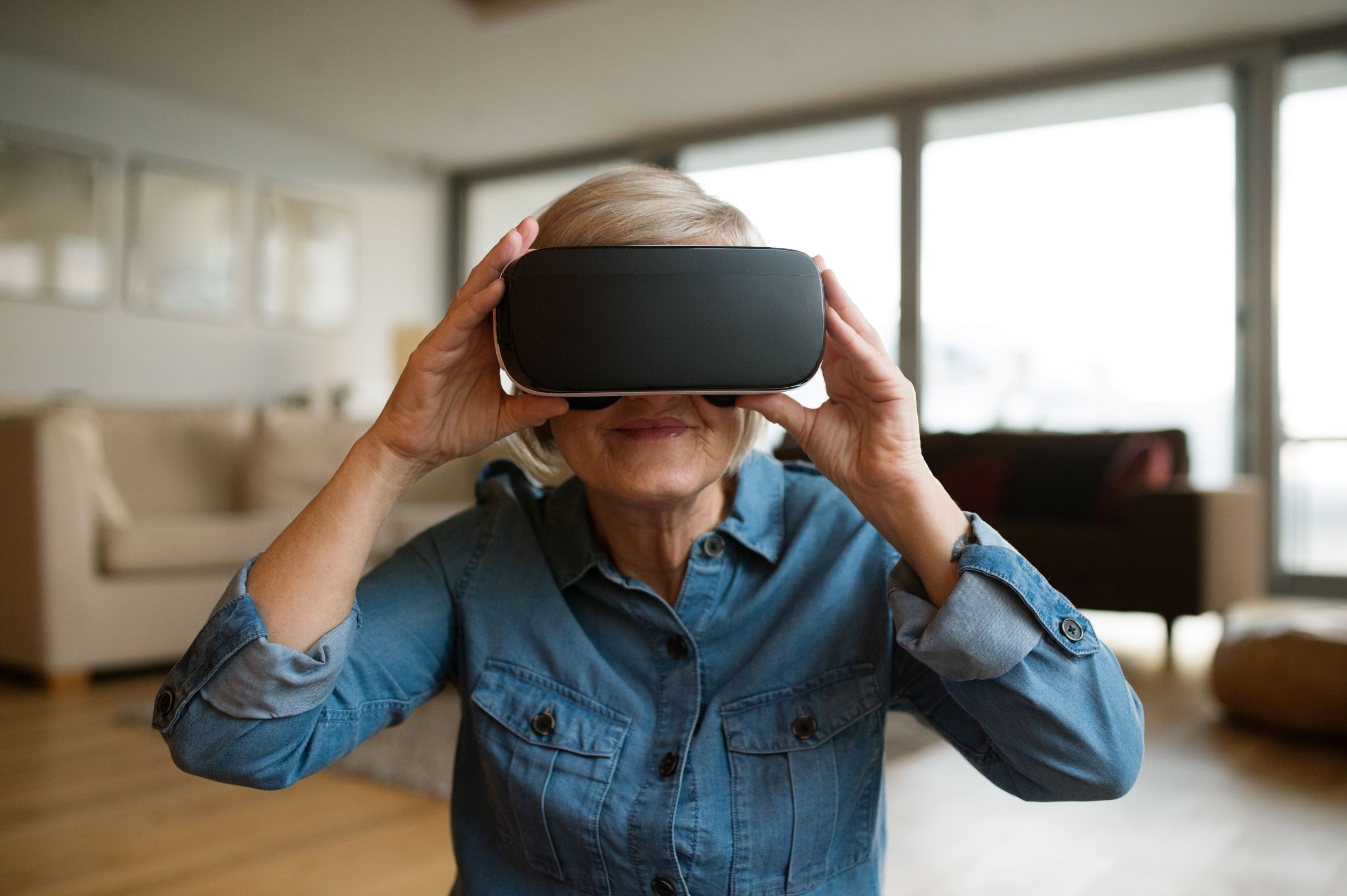Toward the beginning of the COVID-19 public health crisis, I authored a blog post highlighting some of the strategies that seniors housing and care operators were implementing to maintain resident wellness and engagement. Subsequently, I had the opportunity to present on this topic at the 2020 NIC Fall Conference. While preparing, it struck me how much these strategies have evolved over the course of just a few months as operators stepped up to the challenge of delivering an ever-greater sense of connectedness to their residents in this time of a global pandemic.
The most common strategies implemented early in the pandemic frequently involved a simple barrier of sorts, whether that was the window of a building or a plastic “cuddle curtain” for receiving a hug. These tactics gave residents the opportunity to see family and friends and to approximate the physical contact that residents and family members crave. In select communities, essential caregivers can have regular contact and visitation with residents, but when that isn’t possible, adoption of virtual reality, robotic technology, and other creative ways to facilitate companionship are becoming more common. Below, I comment on some of these.
Virtual Reality Technologies
Ten months into the pandemic, virtual reality (VR) companies have established a foothold in the seniors housing and care sector. Virtual reality creates opportunities for socialization that are both digital and physical at the same time. These experiences can provide a 360° video inside a headset, delivering a panoramic view that moves with the viewer. In some instances, virtual reality cameras can be provided to family members so they can film weddings, reunions, vacations, and other family gatherings. These are then stored as part of a content package residents can immerse in, allowing them to feel like a participant, as opposed to simply a viewer.
Facilitated Companionship
Socialization and interaction are key value propositions of senior living. Achieving these value propositions has been made that much more difficult during the pandemic when mask-wearing and physical distancing are known steps for disease prevention or slowdown. In the age of COVID-19, facilitating companionship in any way possible is key for residents.
Pre-pandemic, some forward-thinking Medicare Advantage operators were using a “two birds, one stone” tactic to address both food insecurity and loneliness. Partnerships with organizations like Hunger Action Alliance and Meals on Wheels rely on meal deliverers to do more than simply drop food off. They engage with members, report back to care teams on home conditions, medication adherence, and other potential concerns identified during their visit.
Senior housing operators also use this strategy, recognizing that every touch point is an opportunity for socialization. While the necessary safety measures must still be implemented, each medication distribution, meal delivery, and clinical check-in can be viewed as a chance to engage with residents.
Outside of a property itself, other opportunities exist to facilitate companionship. One such opportunity and organization is Papa which, in the pre-pandemic era, paired motivated college students with older adults and families who needed companionship and assistance with everyday tasks. Papa partnered with health plans to not only address loneliness, but to also provide transportation to appointments, medication pickup, and church or gym attendance. Times are different now, and in the pandemic era, Papa has focused on offering virtual companionship. Interested parties can still sign up for free and request a “papa pal,” to provide company virtually and share an uplifting conversation.
Robotic Animal Companion Pets and Social Robots
Robotic animal companion pets are also used to address issues of social isolation and can be a creative fit to brighten up the days of a resident. These robotic pets respond to both touch and motion and provide a realistic animal experience. The genuine feel and sound of a cat purring and soft fur mimics a live animal, without the need for trips outside or refilling the water bowl. The realism and interactive play provided by these robotic pets combats the feelings of loneliness amongst older adults.
For those looking to go even deeper into the realm of robotics, there is Pepper, the first social humanoid robot. Originated in Japan by SoftBank Robotics, Pepper can recognize faces and basic human emotions and engages with people through conversation and a touch screen. This robot can offer proactive engagement by calling residents by name, initiating interaction, and proactively moving toward residents to start conversations. Another major benefit is Pepper’s ability to speak multiple languages, which can help with residents who are forgetting native languages due to lack of use.
Creatively Utilize Existing Resources
With all the challenges posed by the pandemic and its impact on resources, it is more important than ever to utilize existing resources to their fullest capacity. This could mean taking advantage of creative chefs and kitchen staff. For example, operators may consider implementing a virtual teaching kitchen with the ability to televise a chef cooking a favorite recipe. It would be even better if the chef can tie that recipe to wellness and use the experience as an opportunity to educate residents about nutrition. This could be something as simple as a mocktail that touts the health benefits of ginger. Mocktail kits can be created in advance and distributed to residents for their enjoyment.
The challenges created by the COVID-19 pandemic have been many. Among them is the need to maintain interaction and socialization opportunities for residents. Seniors housing and care operators have embraced the opportunity to tackle this issue by continuously evolving their strategies to mitigate the side effects of social distancing and isolation. Time, creativity and imagination will no doubt spawn further ideas to combat this very important pandemic-related challenge.
